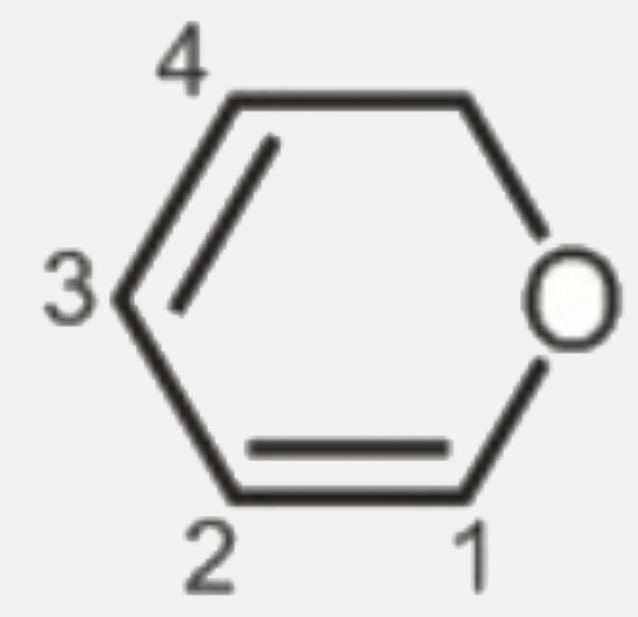Complete Solutions to CHEMISTRY of chapter NTA NEET SET 26 of Class 12 book with complete answers and questions
| Class 12 | CHEMISTRY |
| Chapter | NTA NEET SET 26 |
| NTA MOCK TEST | CHEMISTRY |
| Number Of Questions | 45 |
| Academic Year | 2023-24 |
Metal chloride A is soluble in hot water but insoluble in cold water. Select correct statement about A. Thus
View SolutionWhich of the following is wrong statement?
View SolutionWhich of the following is correct statement ?
View SolutionClay is an example of
View SolutionA metal M and its compound can give the following observable changes in a consequence of reactions
`Munderset(HNO_(3))overset("dilute")(rarr)["Colourless Solutions"]underset(NaOH)overset("aqueous")(rarr)["White Precipitate"]underset("NaOH(aq)")overset("excess")(rarr)["Colourless Solutions"]overset(H_(2)S)(rarr)["White Precipitate"]`
View SolutionExample for a coordination compound is
View SolutionThe compound which gives oxygen on moderate heating is
View SolutionThe order of covalent character of KF, Kl, KCl is
View SolutionA doctor by mistake administers a `Ba(NO_(3))_(2)` solution to a patient for radiography investigations. Which of the following should be given as the best to prevent to adsorption of soluble barium?
View SolutionWhich are correct match?
(i) Eka silicon-Be (ii) Eka aluminium -Ga
(iii) Eka mangenese-Tc (iv) Eka scandium-B
View SolutionWhich of the following statement is incorrect
View SolutionWhich is more basic in character?
View SolutionThe strength in volumes of a solution containing 30.36 g/L of `H_(2)O_(2)` is (Given volume of 1 mole of gas STP = 22.4 litre)
View SolutionFor `(A)+K_(2)CO_(3)+air overset(Heat)rarr(B)`
`(B)+CI_(2)rarr(C)`pink
Which of the following is correct ?
View Solution`CrO_(4)^(2-)underset(pH=Y)overset(pH=X)(hArr)Cr_(2)O_(7)^(-2)` The pH values of (X) and (Y) are respectively
View SolutionThe rate constant for the reaction
`2N_(2)O_(5) rarr 4NO_(2)+O_(2)`
is `3.0 xx 10^(-5) s^(-1)`. If the rate is `2.40 xx 10^(-5) mol L^(-1) s^(-1)`, then the concentration of `N_(2)O_(5)` (in `mol L^(-1)`) is
View SolutionIdentify A and B in the given reaction
`(A) overset("Dil. "H_(2)SO_(4)//HgSO_(4))rarr underset("(unstable)")underset("vinyl alcohol")({:(CH_(2)),("||"),("CHOH"):})rarr(B)`
View SolutionPrimary, secondary and tertiary alcohols can be distinguished by performing
View SolutionAmong the following, the essential amino acid is :
View SolutionPhthalic anhydride on heating with resorcinol in the presence of conc. `H_(2)SO_(4)` gives `:`
View SolutionA colourless organic compound gives brisk effervescence with a mixture of sodium nitrite and dil. `HCl`. It could be
View SolutionWhich of the following is not formed in iodoform reaction ?
View Solution
In this molecules, `pi-` electron - density is more on
View SolutionWhat is true about the following equilibrium ?

View SolutionWhich of the following is `Wurtz-Fitting reaction?
View SolutionWhich of the following compounds is oxidised to prepare methyl ethyl ketone?
View SolutionAmong the following isomeric amines which one is expected to have the lowest boiling point ? .
View SolutionThe reaction conditions leading to the best yield of `C_(2)H_(5)Cl` are
View SolutionWhich of the following does not give benzoic acid salt on oxidation with hot alkaline `KMnO_(4)`.
View SolutionIdentify the product in the following reaction.
3,4,5-tribromoaniline `underset((ii)H_3PO_2)overset((i)"Diazotisation")to `?
View SolutionHalf life of a reaction becomes half when intial concentrations of reactants are made double. The order of the reaction will be:
View SolutionIn which of the following crystals alternate tetrahedral voids are occupied?
View SolutionA gas is heated in such a way that its pressure and volume both become double. Now by decreasing temperature, some of air molecules were introduced into the container to maintain the increased volume and pressure. Assuming `1//4^(th)` of the initial number of moles has been given for this purpose. By what fraction of temperature has been raised finally of initial absolute temperature.
View SolutionA mixture of salts was treated to determine the barium constent. A 0.230 g sample was dissolved and treated with excess potassium chromate. The precipitate of `BaCrO_(4)` was dissolved in dil HCl to convert `BaCrO_(4)` to `Cr_(2)O_(7)^(2-)` anion. The solution treated with excess sodium iodide and trilodide produced was titrated with 21 mL of 0.095 M sodium thiosulphate. Calculate the `%` of `BaCl_(2). 2H_(2)O` in the sample. [Given Molar mass of `BaCl_(2.2H2O)=244]`
View SolutionIt is more convenient to obtain the molecular weight of an unknown solute by measuring the freezing point depression than by measuring the boiling point elevation because
View SolutionIf `lamda_(0)` and `lamda` be the threshold wavelength and the wavelength of incident light, the speed of photo-electrons ejected from the metal surface is:
View SolutionWhich of the following is not an intramolecular redox reaction?
View SolutionAlizarine dye obtained from the root of madder plant is Anthra quinone derivative. Its structure corresponds to -
View SolutionGiven that `E^o` values of `Ag^+//Ag, K^+//K, Mg^(2+)//Mg` and `Cr^(3+) //Cr` are `0.08 V, -2 .93 V, -2 37 V` and ` -0. 74 V` respectively. Therefore the order for the reducing power of the metal is .
View Solutionaddition of phosphates and nitrates/fertilizers into water leads to
View SolutionWhen `3.06 g` of solid `NH_(4)HS` is introduced into a two-litre evacuated flask at `27^(@)C, 30%` of the solid decomposes into gaseous ammonia and hydrogen sulphide. (i) Calculate `K_(c )` and `K_(p)` for the reaction at `27^(@)C`. (ii) What would happen to the equilibrium when more solid `NH_(4)HS` is introduced into the flask?
View SolutionThe `[H^(+)]` of a resulting solution that is 0.01 M acetic acid `(K_(a)=1.8xx10^(-5))` and 0.01 M in benzoic acid `(K_(a)=6.3xx10^(-5))` :
View SolutionThe correct order of molar conductivity at infinite dilution of `LiCl, NaCl and KCl` is
View SolutionEquilibrium constant `K_(p)` for the reaction `CaCO_(3)(s) hArr CaO(s) + CO_2(g)` is 0.82 atm at `727^@C`.
If 1 mole of `CaCO_(3)` is placed in a closed container of 20 L and heated to this temperature, what amount of `CaCO_(3)` would dissociate at equilibrium?
View SolutionFor the hypothetical reaction `A_(2)(g) + B_(2)(g) hArr 2AB(g)`
If `Delta_(r)G^(@)` and `Delta_(r)S^(@)` are `20 JK^(-1)mol^(-1)` respectively at `200` K.
`Delta_(r)C_(p)` is `20 JK^(-1) mol^(-1)` then `Delta_(r)H^(@) "at" 400 K ` is :
View Solution
CHEMISTRY questions and complete solutions for chapter NTA NEET SET 26 of NTA MOCK TESTS of Class 12